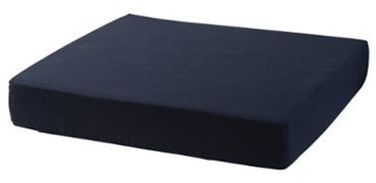|
Once your new power wheelchair has been delivered to your home, an assistive technology professional (ATP) will make adjustments—with you in the chair—until you feel comfortable.
If you find yourself uncomfortable after the ATP leaves, do not hesitate to call your durable medical equipment (DME) company to request a return visit. |
|
|
Your wheelchair should be comfortable. There are many ways it can be adjusted and modified, including trying a different seat cushion.
Although some adjustments can be made with a standard Allen wrench, you should ask your ATP or technician if you can safely make adjustments on your own. |
|
Seat and Back Cushions
|
Your physical therapist (PT), occupational therapist (OT), and ATP will recommend the most appropriate wheelchair cushion for you at the time of your evaluation. Having the right cushion is an important factor in your overall comfort level.
The seat cushion performs a variety of functions, including pressure relief and postural support. Due to the amount of time spent in the power wheelchair, pressure relief is often the top priority for ALS patients. |
|

Wheelchair cushions are usually made from foam, gel, air, or a combination of these materials. Here is a brief overview of the different types of cushions:
|
Air Cushions
Air cushions may not provide the same stability or positioning as gel cushions, but many ALS patients find them the most comfortable because they provide maximum pressure relief and weight distribution. Air can be added to or released from the cushion’s air cells. It is very important to keep air cushions properly inflated. Follow your ATP’s instructions closely. |
Getting Comfortable
Not everyone will find the same cushion comfortable. If you are still uncomfortable after your final fitting, do not hesitate to ask your ATP to come back to your home to make more adjustments.
If you find yourself stuffing pillows, blankets, towels, and extra cushions around you, it is probably a sign that your chair or cushion needs more adjusting.
If one spot on your body is hurting and feels like it has too much pressure on it, you may need to tilt and recline your chair more often as well as adjust your cushion pressure if it is an air cushion. You do not want to develop pressure sores, which can become their own problem.
If you find yourself stuffing pillows, blankets, towels, and extra cushions around you, it is probably a sign that your chair or cushion needs more adjusting.
If one spot on your body is hurting and feels like it has too much pressure on it, you may need to tilt and recline your chair more often as well as adjust your cushion pressure if it is an air cushion. You do not want to develop pressure sores, which can become their own problem.





